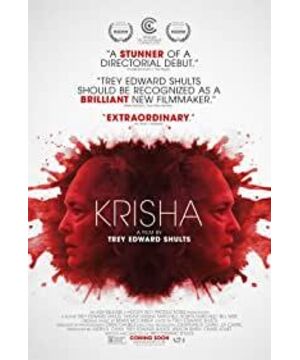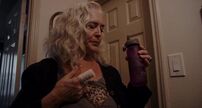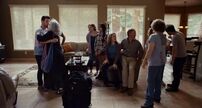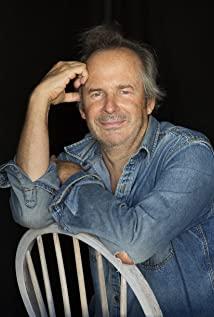It may represent a path for film development in the next few years. After watching it, you will be amazed that the original movie can still be shot like this.
Rest assured, this experimental new film is definitely not a so-called "literary and artistic film". If you label the film with stereotypes and stereotypes, you will miss experiencing a masterpiece with a "new wave" look and feel.
"Krisia", a directorial debut that relies on style to win.
The format of the film is very small. It tells the experience of a middle-aged woman named Klixia who returned home after a long absence from her family in just a few hours.
There is no flashback narrative in the whole film, and no telling the audience why the woman left. In the clips and some lines, the extremely restrained lines and scenes illustrate that this woman abandoned her son and left the family alone to escape her life and change the time. Life situation.
The woman numb herself with drugs and alcohol. When she returned home this time, she hoped to reintegrate into the family and change her image in the hearts of her family, but under tremendous pressure, she ultimately failed.
The climax of the film is so sharp that it does not give people a chance to breathe. Krisia, who has returned to the embrace of alcohol and drugs, once again tore the family apart, disrupted what might have been a beautiful day, and lost repairing herself and her sister, and son, and The relationship between an elderly mother and other family members.
The beginning of the film heralded the tragic end of the story. The beginning and the end are both stressful shots of constantly advancing Krissia's facial close-ups.
Krisia's uncontrollable face, tearful eyes, slightly trembling jaw...Life fell into the bottom again and collapsed completely.
The story of "Krisia" is not very exciting. It completely relies on the bold soundtrack beyond the conventional type, sharp lens language, fragmented quick editing and other techniques, allowing the style to control the story itself, focusing on the rendering of emotions, and hiding the theme. In the style.
The point of conflict in the film does not rely on plot turns and plot arrangements, but on auditory and visual impacts to continuously gather dramatic tension, inject a sense of insecurity into the nerves of the audience, drown your rationality, and draw out your sensuality. , The uncontrolled side.
"Krisia" is brewing out of control throughout, describing Krisia's arrival as a doomed failure and a wrong choice.
How to behave out of control and increase the tension of the plot is the most avant-garde exploratory aspect of "Krisia".
The method is dazzling, but the effect it finally achieves is indeed amazing.
At the beginning of the story, the depressive frame of 4:3, so there is tension and anxiety.
A follower advancing the camera, simply and neatly followed Kristia's perspective, came to the home. She also found the wrong door at the beginning, which shows that she has indeed not returned home for many years and heralds the failure to integrate into the family.
After arriving at home, she successively talked with several family members.
In harmony, she hopes to cook a sumptuous meal for everyone to make up for the past and return to the family at the same time.
In fact, the film still has the division of the scene and the scene, the advancement of the plot. However, the performance in the story is indeed not obvious, all the advancement is reflected in huge differences in form.
The return of the first act ended 10 minutes later. When Klixia came to the bedroom, prepared to rectify his mood, and went downstairs to the open kitchen, an obvious symbolic shot announced the beginning of the crisis.
Krisia looked downstairs through the door. She and the whole family were separated by the floor and the door, and her tension suddenly increased.
The weird music sounded slowly at this time.
This tens of minutes of music is absolutely unprecedented, like the overtone of a plucked stringed instrument, and has been electronically processed. It is high and low, intermittent, and stimulates the audience's hearing in an incoherent and variable manner.
In such a disturbing soundtrack, the picture changes the stability and smoothness of the previous scene, but is intersected by fast-editing, fragmented clips.
Under Kristia's flustered and lonely eyes and expressions, there are passages between family members busy with their own affairs.
These passages are not random, but continue to increase instability and violence.
The young child is struggling with strength. Or watch a ball game, busy talking.
Going out with her closest sister to meet her elderly mother.
Kristia seemed to be isolated and neglected. This kind of nature, which family members hoped to create, seemed to her to be a kind of alienation.
The fragmented high-speed editing, combined with the erratic soundtrack, suddenly appeared Krissia's stiff expression, making the story constantly flustered.
All formal treatments are aimed at creating anxiety and expressing a fluid state of division.
The film abandons stable or intrusive flashbacks to look back at the past, but instead uses a few lines of characters to perform point-to-point performance.
Krissia had a long conversation with his son and sister's husband, but both conversations ended in failure and anger.
Undoubtedly, the family was not prepared to forgive this traitor and forgive this fugitive.
This home is actually a battlefield for everyone. Her son complained of her escaping responsibility, and her sister’s husband was jealous that she could choose to escape. The niece who had just given birth seemed to be enjoying herself, but it also indicated that the family would become her prison.
This home has been shaped into a metaphorical prison, the relationship between members falls apart, and the home is alienated into a terrifying spiritual “wall” of existence.
The failure of the two conversations made Krissia very excited, and she once again looked for alcohol and drug paralysis.
At this time, the lens language entered a more dazzling stage, a large 360 short rotation shooting, centered on Klixia, in her dizzy perspective, we saw other family members who left her out.
Finally, her carefully cooked turkey was scattered on the ground.
Everything is ruined, everything is in vain. The tremendous pressure overwhelmed her.
The climax at the end is a sword to seal the throat, two periods of reality and fantasy are intertwined, one is my sister crying to her in disappointment, and the other is my sister angrily denounces!
Finally, after a binge drinking, Klixia rushed into the living room and confronted her son, hoping to get his recognition. As a result, the son expressed angrily, "There is no such mother." His sister was so angry that she was driven out. Klixia started to tear her madly. force.
Beside the flustered family and tearful mother... After
entering the third act completely out of control, the frame changes from a rectangle of 16:9 to 2.33:1 after being compressed up and down, and then 4: after being compressed left and right: The square of 3 is even more guilty than 4:3.
The narrow picture frame escalates in panic, the conflict rises, and the tension of the plot at the end is like a rubber band that breaks after fatigue to the limit!
At the last moment, the plot exploded. The character exploded. Emotions exploded!
The weird music played again, and the back of the picture began, again with a close-up of Krissia crying, but Krissia who was out of control slowly returned to calm.
That is not to see everything through, but from the anxiety of repentance to the devil!
This is definitely not calm, but a hidden murderous intent.
Instability and loss of control run through the entire film!
The accumulation of emotions and changes in the sense of form have become the biggest highlight of the film!
It is indeed suspected of dazzling the story with skills, but at the same time I have to admit that this is an innovative attempt in film expression.
View more about Krisha reviews










